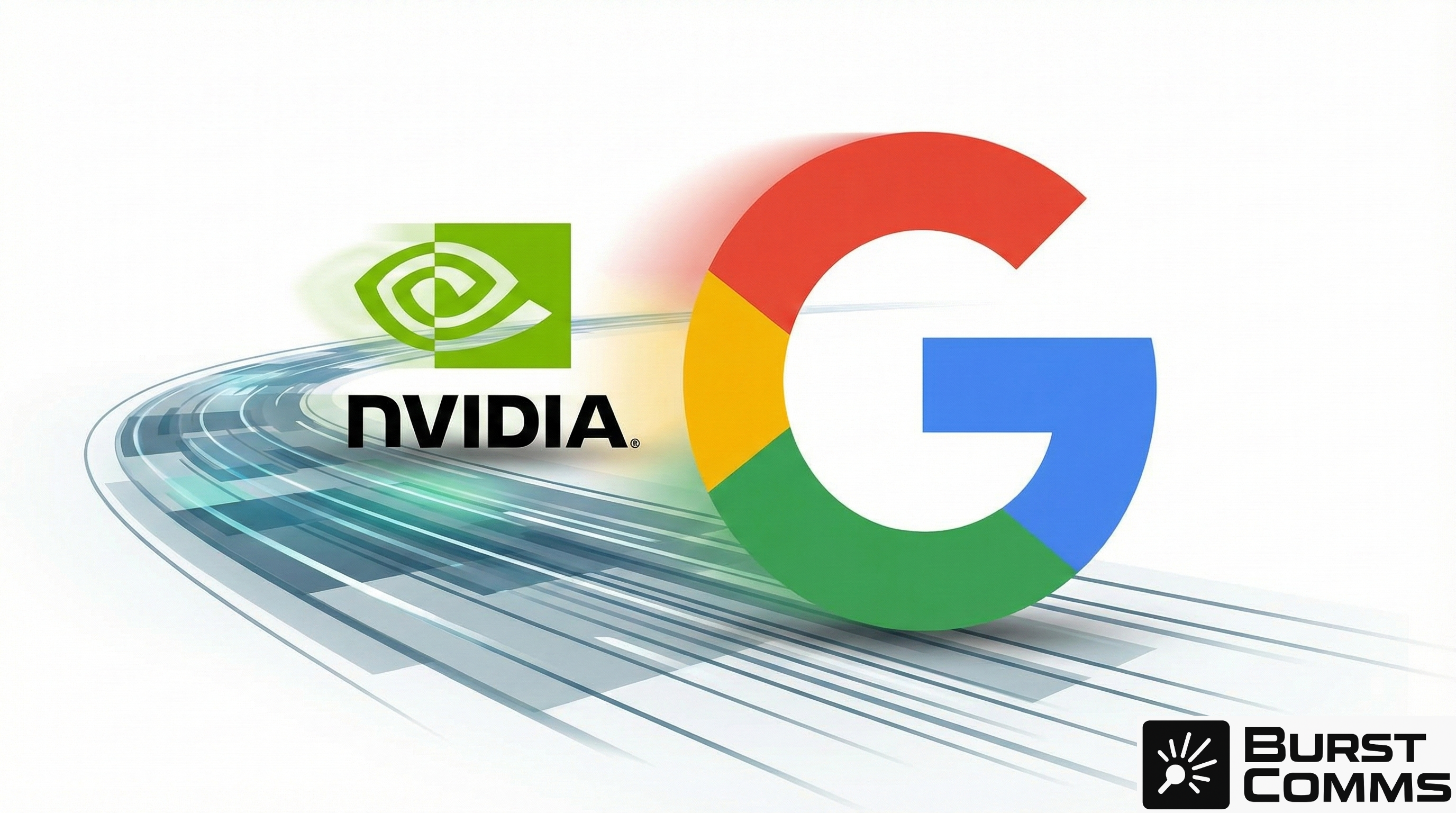
Nvidia has been the undisputed king of the artificial intelligence chip market for the better part of a decade. Its processors have powered everything from chatbot training to real-time language translation, image generation and the backbones of massive AI companies. If you were building anything remotely powerful in AI, you were paying Nvidia for the privilege. But that near-religious dependence on Nvidia may have just been cracked wide open by the one company with enough silicon, capital and audacity to do it: Google.
Until now, Google’s Tensor Processing Units, its custom AI chips built in-house, were kept locked away behind the curtain of its cloud services. You couldn’t buy one, rent one outside its platform, or install one in your own servers. They were Google’s secret sauce, reserved for its own use. That changed in November 2025. In a move that caught the entire chip industry by surprise, Google announced that it would begin selling its newest TPU chips to other companies, starting with Meta. Meta, parent company of Facebook and Instagram, has historically been Nvidia’s most loyal customer, pouring billions into Nvidia’s high-end graphics processors to build and run its large language models. Now, it’s about to shift a significant part of its infrastructure to Google’s TPU v7 “Ironwood”, marking the first time a top-tier AI company has defected from Nvidia’s ecosystem.
Why does this matter? Because Google isn’t just entering the game, it’s changing the rules. Nvidia’s chips are general-purpose processors originally built for rendering video game graphics, later adapted for AI. Google’s TPUs, by contrast, are laser-focused on one task: running AI models efficiently at massive scale. They’re custom silicon built from the ground up to handle matrix math, the heavy lifting of AI, with none of the gaming baggage. That difference matters when you’re operating at hyperscale. Meta’s latest AI models cost a fortune to run every second of every day. Shaving even a few percentage points off power consumption or chip cost can save billions. Google claims its chips can cut those costs by up to 35 percent. For Meta, that’s not a perk, it’s an economic necessity.
But performance alone isn’t the only motivator. The AI chip supply chain is fragile, tightly bound to just a handful of manufacturing sites. Nvidia’s most advanced chips are built using a technique called CoWoS, a high-end packaging method with limited global capacity. That makes supply slow and unpredictable. Google, meanwhile, has secured its own pipeline and has more control over how its chips are built and allocated. This means Meta gets faster access, more consistent deliveries, and insulation from Nvidia’s pricing power. It also means Meta can keep the chips on its own premises, satisfying regulatory and security needs that cloud-hosted models can’t always meet.
Still, there’s a contradiction buried in this pivot. Google’s cloud division has spent years building an entire business model around not selling TPUs directly, but using them to lock customers into Google Cloud Platform. The idea was always: use our chips, but on our terms, in our data centers. This on-premises TPU deal with Meta is a dramatic reversal of that philosophy. It’s not just an anti-Nvidia strike. It’s a potential cannibalisation of Google’s own cloud margins. Selling hardware that used to be a proprietary advantage raises serious questions about whether Google is trading short-term chip wins for long-term control over cloud revenue.
And even if the hardware story is compelling, the real battle is upstream, in software. Nvidia’s grip on the market isn’t just about silicon. It’s about CUDA. CUDA isn’t just an API. It’s a gravitational field. A decade’s worth of optimisation, custom kernels, ecosystem maturity, and plug-and-play compatibility means that Nvidia’s GPUs work out of the box with almost everything in the AI pipeline. Google’s counterweight, PyTorch/XLA, JAX, Pallas, is catching up fast. But moving Meta’s infrastructure to TPUs isn’t a simple swap. It means reengineering thousands of production pipelines, deployment stacks and DevOps flows to run in an entirely new runtime environment. The friction is real, the risk is significant, and the timeline won’t be short.
The chips themselves are impressive. Google’s Ironwood TPU matches Nvidia’s Blackwell B200 in raw speed and power, while cutting down on heat, latency, and cost. Instead of using legacy copper wires, Google routes data between chips with beams of light, optical switching, allowing over 9,000 chips to be linked in a single, tightly coordinated cluster. For inference, the process of delivering AI-generated responses to users, it’s an architectural advantage that scales beautifully.
But Google’s edge isn’t just hardware. It’s vertical control. With its own Axion CPU, Titanium networking layer, and software stack, Google isn’t just selling chips. It’s selling an entire ecosystem that avoids Nvidia, Intel, and Mellanox altogether. That cuts out layers of cost. But it also locks buyers into Google’s version of vertical integration, trading one closed ecosystem for another, with different terms and a different brand on the box.
This isn’t the end of Nvidia. It’s the end of Nvidia as the only option. For training massive new AI models, Nvidia still dominates. It still has the libraries, developer loyalty, and frontier-grade performance. But inference is where the dollars are. It’s the industrial phase of AI. And now there’s a new player, offering cheaper, cooler, faster silicon that’s finally up for sale. Google has shown that the moat can be crossed, even if it has to flood its own castle in the process.